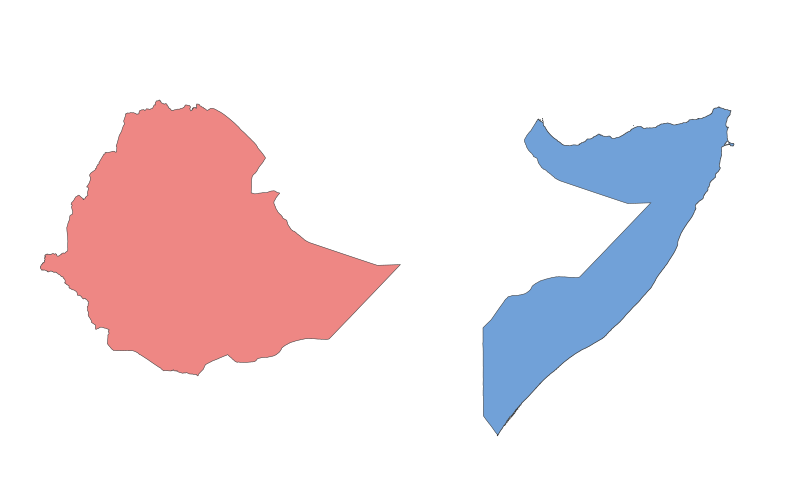Ethiopia vs. Somalia: A Geographical Comparison

Geographical Comparison Table
| Category | Ethiopia | Somalia |
|---|---|---|
| Location | Horn of Africa, landlocked | Horn of Africa, coastline along Indian Ocean |
| Size | ~1.1 million km² | ~637,657 km² |
| Climate | Tropical monsoon, temperate highlands | Arid to semi-arid, hot year-round |
| Natural Resources | Gold, platinum, hydropower, fertile soil | Uranium, iron ore, natural gas, fisheries |
| Urban Development | Addis Ababa (capital), Dire Dawa, Mekelle | Mogadishu (capital), Hargeisa, Kismayo |
| Transportation | Limited railways, road networks improving | Poor infrastructure, reliance on ports |
Description of Ethiopia and Somalia
Ethiopia
Ethiopia, located in the Horn of Africa, is the region's oldest independent nation with a rich history dating back to ancient times. It is known for its diverse cultures, languages, and religions, including Orthodox Christianity and Islam. The country's economy is primarily agrarian, with coffee as a major export. Ethiopia has made significant strides in infrastructure development, including the Grand Ethiopian Renaissance Dam (GERD), which aims to boost energy production. Its highland regions feature fertile land, while the lowlands are arid.
Somalia
Somalia, also in the Horn of Africa, boasts the longest coastline on the continent. It has a history of trade and maritime culture, influenced by Arab, Persian, and African traditions. The country has faced decades of political instability, impacting its economy and infrastructure. Somalia's economy relies on livestock, remittances, and emerging sectors like telecommunications. The climate is predominantly arid, with nomadic pastoralism being a key livelihood. Recent efforts focus on rebuilding cities like Mogadishu and improving security.
Both nations share cultural ties but differ significantly in geography, economic focus, and development challenges.